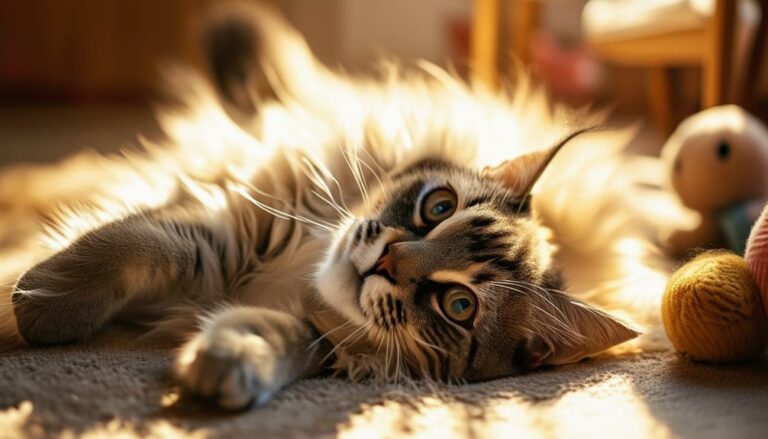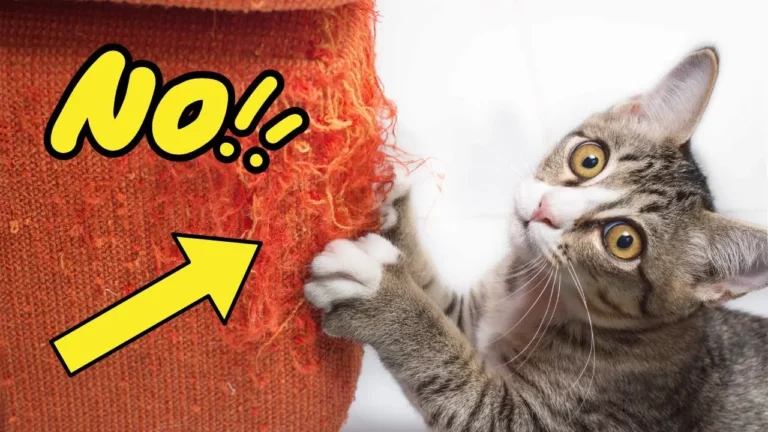How to Stop Your Cats From Scratching Furniture
I’ve always loved having cats around, but one persistent issue has been their tendency to scratch up my furniture.
I knew that understanding their behavior was key, so I started researching ways to redirect their instincts.
Providing suitable alternatives like scratching posts and experimenting with different materials helped, but there were still some challenges. I also learned about using deterrents and how essential consistent training is.
Curious about the most effective strategies I’ve discovered?
Let’s explore some practical tips that can save your furniture and keep your beloved companions happy.
Understand Cat Scratching Behavior
To effectively stop your cats from scratching furniture, you first need to understand why they engage in this behavior.
Cats scratch for several reasons, all of which are natural and essential for their well-being.
First, scratching helps them mark their territory.
They’ve scent glands in their paws, so when they scratch, they leave both a visual and scent mark. This behavior is vital for them to feel secure in their environment.
Second, scratching helps cats maintain their claws.
It’s a way for them to remove the outer dead layers of their claws, keeping them sharp and healthy. This is especially important for their overall mobility and ability to defend themselves if needed.
Third, scratching provides physical exercise and a way to stretch their muscles.
It’s similar to how we might stretch our arms and legs after sitting for a long time. This action helps them stay agile and fit.
Lastly, scratching can be a form of stress relief for cats. It allows them to release pent-up energy and reduce anxiety.
Understanding these motivations is the first step in addressing and redirecting this natural behavior effectively.
Provide Suitable Alternatives
One effective way to stop your cats from scratching furniture is by providing them with suitable alternatives that cater to their natural instincts.
Cats have a strong desire to scratch, not only to sharpen their claws but also to mark their territory and stretch their bodies.
To satisfy these needs, I’ve found it helpful to introduce various scratching posts and pads around my home.
Scratching posts come in different shapes, sizes, and materials, and it’s important to choose ones that suit your
Experimenting with materials like sisal, cardboard, and carpet can also help determine what your
Placing these alternatives near the areas where your
Additionally, I’ve placed
This not only provides my cats with designated scratching spots but also gives them spaces to climb and play.
Use Deterrents Effectively
I’ve found that using deterrents effectively can play a crucial role in preventing cats from scratching furniture.
One method I use is applying double-sided tape to areas my cats find tempting.
Cats dislike the sticky sensation, which discourages them from returning to those spots. It’s a simple, non-toxic solution that works wonders.
Another deterrent I’ve tried is citrus sprays.
Cats generally don’t like the smell of citrus, so spraying a diluted mixture of lemon or orange essential oil on the furniture can keep them away.
It’s important to test a small, hidden area first to make sure the spray doesn’t damage the fabric.
For a more high-tech solution, I’ve used motion-activated air canisters.
These devices emit a harmless burst of air when they detect movement, startling the
They’re effective but should be used in moderation to avoid stressing your pet too much.
Lastly, I’ve also placed aluminum foil on surfaces my cats love to scratch.
The sound and texture are unappealing to them, deterring further attempts.
Combining these deterrents with positive reinforcement helps create a scratch-free home environment for both my furniture and my furry companions.
Protect Your Furniture
When it comes to protecting my furniture, I focus on using protective coverings and scratch-resistant materials. First, I invest in durable slipcovers that can withstand my
These covers are easy to remove and wash, which helps keep my furniture looking fresh.
Additionally, I place double-sided tape on areas where my
Cats dislike the sticky texture, so this simple trick discourages them from targeting those spots.
Next, I look for scratch-resistant fabrics when purchasing new furniture.
Materials like microfiber and leather are less appealing to cats and can endure their scratching habits better than other fabrics.
I also use furniture protectors, such as plastic or vinyl guards, to cover the legs and corners of my couches and chairs. These protectors are nearly invisible and don’t alter the appearance of my furniture.
Lastly, I strategically arrange my furniture to limit my
By placing items like bookshelves or end tables near my couches, I create physical barriers that make it harder for my
These steps, combined with consistent effort, help keep my home looking great despite my
Train and Reward Your Cat
In addition to protecting my furniture, I focus on training and rewarding my
Training my
Whenever I catch her scratching the furniture, I gently pick her up and move her to a designated scratching post.
I make sure the post is sturdy and covered with a material she likes, such as sisal or carpet.
Rewarding my
Over time, she starts associating the scratching post with good things, making her more likely to use it.
Consistency is key in this training process. I make certain that everyone in the household follows the same routine.
If she scratches the post, she gets a reward. If she scratches the furniture, she gets redirected. This consistent approach helps my
Conclusion
By understanding why cats scratch, providing them with appealing alternatives, and using deterrents, you can protect your furniture. Consistent training and rewards will encourage your
Remember, patience is key; it may take time, but with these strategies, you’ll help your






